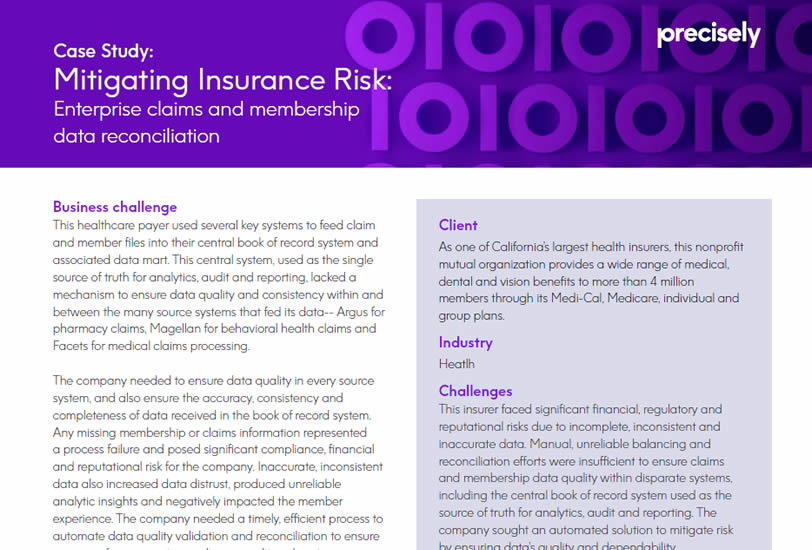Customer Story
Mitigating Insurance Risk: Enterprise Claims and Membership Data Reconciliation
This healthcare payer used several key systems to feed claim and member files into their central book of record system and associated data mart. This central system, used as the single source of truth for analytics, audit and reporting, lacked a mechanism to ensure data reconciliation and consistency within and between the many source systems that fed its data — Argus for pharmacy claims, Magellan for behavioral health claims and Facets for medical claims processing.
The company needed to ensure data quality in every source system, and also ensure the accuracy, consistency and completeness of data received in the book of record system. Any missing membership or claims information represented a process failure and posed significant compliance, financial and reputational risk for the company. Inaccurate, inconsistent data also increased data distrust, produced unreliable analytic insights and negatively impacted the member experience. The company needed a timely, efficient process to automate data quality validation and reconciliation to ensure accuracy for payment, compliance, audit and customer service purposes.
The Insurer selected Precisely Data360 to automate the reconciliation of claims and membership files between the Argus, Magellan and Facets systems to ensure that the book of record system and its data mart housed a complete, accurate and reliable source of truth for claims and membership data.
On a weekly basis, Precisely Data360 uses an enterprise scheduler to create reports of new claims in the Argus, Magellan and Facets systems and capture each new file at both the claim header and detail levels. In addition to these scheduled runs, the solution also includes an adhoc report invocation process to address any reporting exceptions or irregularities.
At month-end, once all data has been loaded into the book of record system and its data mart, Precisely Data360 captures claim and member data detail from each of the three source systems and reconciles it with the data in the book of record system to identify any potential quality issues.
Read more about how this healthcare payer achieved quality-powered data governance established processes for automated validation and data reconciliation within and between critical operational systems.
